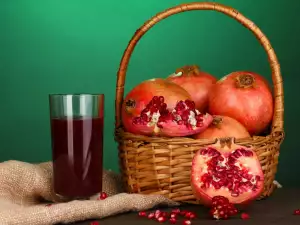Pear is a delicious fruit that is present almost year-round. Juicy and fragrant pears are a favorites of children and adults, and worldwide there are 5000 varieties of whole pears.
The history of the pear dates from time immemorial, and today is known and loved throughout the world. The ancient Greek poet Homer called pears "food of the gods" and it was not accidental. Millions of people around the world love the amazing taste of this otherwise useful fruit.
One of the most interesting types of pear Asian pear, bearing the name of Nashi Pears. Their homeland is China and Japan, but due to its great taste, it made its way into different parts of the world. Asian pear is domesticated in China about 3000 years ago. Nashi Pears grown mainly in China, Korea and Japan.
These have a round shape and size like apples, but its flavor reminiscent of pear. The fruit is aromatic, fresh and with a well-pronounced flavor. Nashi Pears’ flesh is crunchy, which is shaped like beans, which is why very often, they are called "sand pears". Due to similarities with apples, they are called " apple pear ". The fruits ripen in late summer or early fall.

Composition of Nashi Pears
100 g of these contain 15.46 g carbohydrates, 9.8 g sugar, 0.8 g protein, 3.1 g fiber. Pear is rich in vitamin B1, vitamin B2, niacin, vitamin B5, vitamin B6, vitamin C, tannin, calcium, phosphorus, potassium, iron, zinc. Nashi Pears is considered a dietary product because it contains only 42 calories per 100 g
Selecting and storing Nashi Pears
Exotic pear can be found in many place. It is in the larger food stores, and as mentioned, is more like an apple than a pear. Choose ripe pears Nashi Pears, with no signs of decay.
The price of one kilogram our is about 2$. Nashi Pears can be stored at room temperature or in the refrigerator. When the fruits are placed in a cool dark place, they are edible for months.

Culinary use of Nashi Pears
With yellow or amber skin, the fruit of Asin pear have snow white flesh. The result is a sophisticated taste, fresh and fragrant. There have crispy pulp which is formed like beads. Hence the name sand pear.
Nashi Pears is widely used in exotic recipes of many favorite Chinese dishes. Basically, it is put in salads, but it's very tasty with dry wine. Chinese pear is not very suitable for baking. The flavor of these is a little more complicated. You can eat delicious pear and quite independently, or cook healthy juice.
We will offer you a recipe for a sophisticated and delicious salad with Nashi Pears.
Ingredients: 1 bag Nashi Pears, 300 g chicory and lettuce, 1 head onion, shallots, ¼ cup crumbled blue cheese, ¼ cup chopped walnuts.

For the dressing are needed 2 tablespoons extra virgin olive oil, ½ tsp apple cider vinegar, ½ teaspoon balsamic vinegar, 1 teaspoon honey, ½ tsp Dijon mustard, salt and pepper.
Preparation: Bake walnuts in a dry skillet over medium heat. In salad bowl mix the green, diced Asian pear, blue cheese, chopped shallots and walnuts cool. Prepare dressing and pour over salad. Enjoy!
Benefits of Nashi Pears
Nashi Pear is rich in vitamins and minerals, making it very useful for our health. Furthermore, it is a dietary product and can be used for dieting. The juice made from fresh or dried pears can be used to treat kidney stones, and also has good emollient and antipyretic activity.
It is important to note that the majority of vitamin C is contained in the bark of the pear, so when consuming, it is best not to peel it.
Thanks to the content of tannin, Chinese pear has pronounced anti-diarrheal properties. Nashi Pear aids digestion, provides high-dose vitamins, increases peristalsis.




















Comments